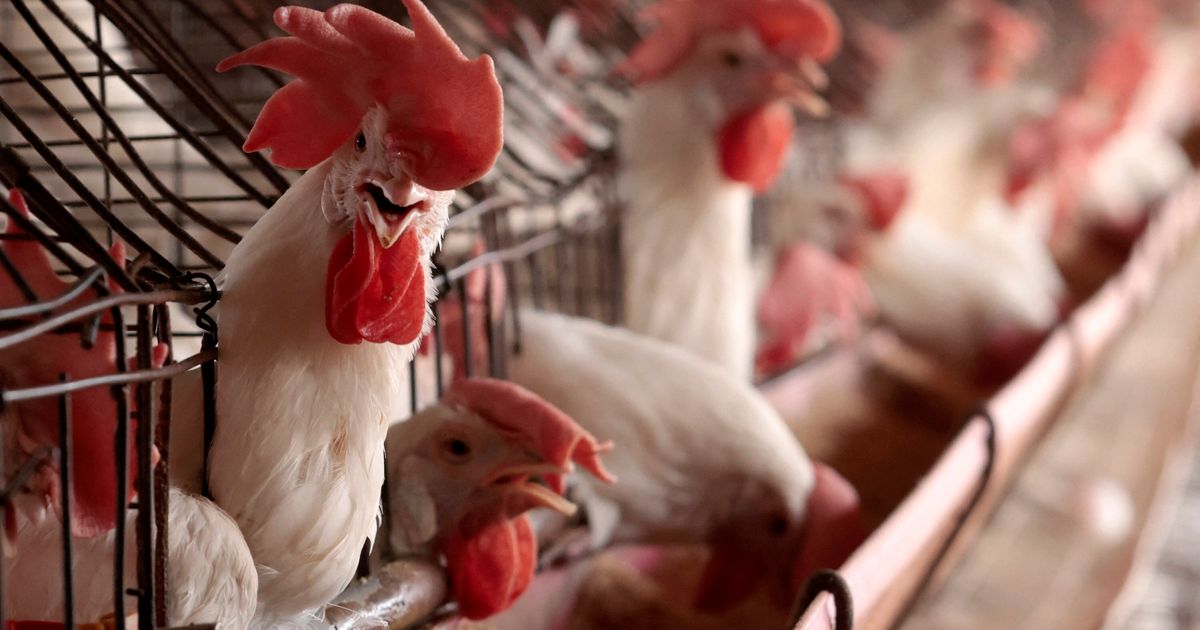
The bird flu has been spreading rapidly among cows on a handful of dairy farms in California, Idaho and Utah. The virus, also known as H5N1, typically infects wild birds, but it spilled over to commercial poultry in 2022 before sickening cattle in March of 2024.
Since then, a handful of people who were exposed to sick animals contracted the avian virus. The virus appears to be contained to farms, but there’s always a chance it could develop mutations that let it spread between humans. And if that happens, we may have another pandemic on our hands.
“We’ve not seen human-to-human transmission to date and that’s a saving grace,” Dr. Andrew Bowman, a veterinary epidemiologist at The Ohio State University College of Veterinary Medicine, told HuffPost.
Here’s what we know about the bird flu — and what it would take for it to start spreading in humans.
What’s going on with the bird flu right now?
In January 2022, health officials detected a H5N1 outbreak in wild birds — the first of its kind since 2016, according to the Centers for Disease Control. One month later, H5N1 hit a commercial poultry facility, infecting multiple turkeys.
Since then, H5N1 has been detected in more animals, including cattle, goats, alpacas, and, most recently, a pig.
The increase in avian influenza activity is due to a major outbreak occurring in wild birds that has been ongoing and has spilled into poultry farms and now dairy cattle,” Dr. Amesh Adalja, an infectious disease expert and senior scholar at the Johns Hopkins University Center for Health Security, told HuffPost.
The main difference between this outbreak and previous ones is that dairy cattle are being infected with H5N1 for the first time ever.
Previously, health officials did not think cattle could get influenza, according to Bowman. “There’s no flu vaccine for cattle, and the dairy industry hasn’t seen anything like this before,” he said.
The pig’s case also concerns infectious diseases experts because pigs can be infected with both human and avian viruses, which can produce a re-assorted virus. This essentially is when two viruses in the body exchange genetic material, a process that could “generate a novel influenza virus that may be readily able to infect and be transmitted between people,” said Dr. Richard Martinello, a Yale Medicine infectious diseases specialist.
These types of re-assorted viruses caused the influenza pandemics of 1957, 1968, and 2009, according to Adalja.
Can humans contract the bird flu?
As more animals get infected, there are more opportunities for humans who are exposed to sick animals to get infected, Adalja said. In April 2024, a person tested positive for highly pathogenic avian influenza (HPAI) H5N1 bird flu, making it the first known case of its cow-to-human spread. In May, a few more cases were recorded in people who’d been exposed to infected dairy cows.
In 2024, a total of 46 people in the U.S. have been diagnosed with the bird flu after being exposed to either an infected cow or bird. A study published in July 2024 suggests the true case count is likely much higher. That report evaluated the blood serum of people who worked on dairy farms that had bird flu outbreaks and found that 14.3% of farm workers tested had antibodies for H5N1, which suggests they had been previously infected.
How big of a public health threat is the bird flu?
According to the CDC, all of the cases documented in the current outbreak have been categorized as sporadic instances of animal-to-human spread. The risk to the general public is low right now because bird flu is not spreading from person to person.
The virus would have to go through genetic changes that allow it to better bind to human receptors for it to start spreading between people, Adalja explained.
If you are worried about eating food products from sick animals, know that pasteurized milk is not affected. Cooking your meat to the right temperature will kill off the flu virus if it happens to be there, according to Bowman.
People who work on farms and have been exposed to infected animals face the highest risk. The symptoms in people who’ve been infected have been mostly mild and have included respiratory symptoms and conjunctivitis. None of the farmworkers with HPAI have been hospitalized for it, according to the CDC.
The biggest concern is ensuring farmworkers are safe by wearing personal protective equipment when handling sick or dead animals and getting tested if they develop symptoms. “One of the biggest things people can do is change clothes and shower at work,” Bowman said.
Are we prepared for a larger outbreak?
According to Adalja, surveillance and testing efforts have fallen short, which has allowed the virus to spread readily between animals.
The U.S. Department of Agriculture recently announced plans to ramp up testing in the coming weeks. The agency will partner with state veterinarians to bulk-test milk samples and have a better idea of where and how H5N1 is spreading.
We Need Your Support
Already contributed? Log in to hide these messages.
This is crucial, because the more the virus spreads, the more chances it has to adapt to humans.
“If we continue to see more infections in animals, especially pigs, and more sporadic infections in humans, the risk increases, as each infection is an opportunity for the virus to evolve a bit,” Martinello said.
If we start to see clusters of infections among people, the virus may have developed the ability to spread between humans. And, as we witnessed with the COVID-19 pandemic, novel viruses can circulate at a rapid pace. Scientists have developed vaccines against H5N1, but these vaccines are not yet available to the public, Martinello said.
The most important step you can take right now? Get vaccinated against seasonal influenza. “Seasonal influenza is a much greater threat to people currently than H5N1 influenza, and getting vaccinated is a great way to protect yourself,” he said.






